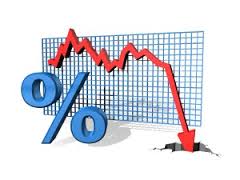- GOLD IRA
- Download Our 2024 Precious Metals IRA Investor’s Guide.
Click Here  Gold IRA
Gold IRA
 Investing
Investing
-
- CRYPTO IRA
- PRICES & STATS
- RETIREMENT PLANS
- BLOG
 Questions? Call (888) 820 1042
Questions? Call (888) 820 1042
Negative Interest Rates Could Be Necessary if There is a Market Fueled Recession.
Disclosure: Our content does not constitute financial advice. Speak to your financial advisor. We may earn money from companies reviewed. Learn more
 The economic recovery and mild expansion has been possible mostly thanks to the enormous amounts of money printed by the FED. The so called Quantitative Easing, which simply consists of printing new money and increasing government debt.
The economic recovery and mild expansion has been possible mostly thanks to the enormous amounts of money printed by the FED. The so called Quantitative Easing, which simply consists of printing new money and increasing government debt.
Is QE a sustainable policy going forward?
This has proven to be a good thing, it spurred the economy back into positive growth rates as it created an environment for corporations to borrow cash at extremely cheap levels. There have been two fairly obvious effects. One is that companies created more jobs as operations became cheaper to finance. The second, corporate balance sheets and the net present value of their income streams looked very attractive, setting the stock market up for a prolonged rally.
However, despite the positive effects of a debt fueled economy, continuously increasing the debt burden is not sustainable in the long run. It would seem clear that it is impossible to continuously fund growth through increasing debt levels. The chart above shows the exponential increase of Federal Banks’ debt holdings since the onset of the financial crisis of 2008.
Adjustments need to be made to return to growing economies fueled by a real increase in economic activity and less by balance sheet savvy. Until a few years ago expanding economies were also accompanied by rising rates of inflation. All that has changed over the past years as commodity prices have taken sharp declines. The decline in commodity prices has been pretty much across the board, although crude oil has been the worst hit. The effect of this has kept inflation low and in some areas of the world, including the US, has turned inflation into negative territory.
Stock market and QE comparison
The Fed has stated in the past, directly or indirectly, that negative interest rates cannot be completely excluded. That may seem anachronistic when the Fed is trying to normalize economic growth to be able to cater higher levels of interest rates. But with the possibility of another recession or a correction, that might be exactly what is necessary given the already low interest rate levels.
But as mentioned above, the recent 7 year rally has been fueled by the Fed’s buyback program, and funnily enough the rally has begun to run out of steam when QE was stopped. The chart below shows the growth of the Fed’s Total Assets mapped against the S&P 500. We can see how the stock market has rallied as long as there was growth in QE, when that flattened out, so did the stock market rally.
Options on the table
In the light of a recession that may be caused by a stock market rout and ever lower Oil prices the Fed must be considering the various policies it could undertake. I see the following options as being on the table:
- continue hiking, in the hope the stock markets ride it out and the economy is strong enough to sustain the dampening effects
- more QE, regardless of what the consequences are and that it will be much harder to normalize the economy further down the road
- introduce negative rates, creating renewed opportunities for corporate operations and boost economic confidence
At this point the first option would have to be ruled out, unless economic activity becomes much stronger and there are real signs of inflation picking up. The second option simply would not make sense; the Fed has increased its holdings in assets by five since 2008. Further rounds of QE could begin to cause concern for the quality of US debt and create apprehension as to how the economy will be normalized when the QE is finally brought to a stop. It seems to me negative interest rates is the likely choice, purely by elimination.
Negative interest rates is unchartered territory in US history but it has been applied before in other developed countries such as, Switzerland, Japan and Europe. In Europe the official central bank rate is still above zero. However, interbank lending rates are well below zero. It’s hard to imagine the concept of lending money and receiving less back, but in theory it can give an overwhelming boost to the economy.
Markets showing signs of stress
Various market stress indices are showing levels that are close to those seen at the onset of the 2008 financial crisis. The Cleveland Federal Reserve stress index for stock market crashes below shows we are very close to the same level reached just before the crisis set in. This index measures the market conditions of 6 major financial assets.
Another barometer for how investors are perceiving risk is High Yield spreads, this type of investment is considered as risky as owning equity. Sharp increases in the return on this asset class indicate higher perception of risk and usually coincide with stock market selloffs. The chart below for the BofA US High Yield index shows a constant rise since the summer of 2014 with levels not seen since September 2008.



 Silver
Silver Gold
Gold Platinum
Platinum Palladium
Palladium Bitcoin
Bitcoin Ethereum
Ethereum

 Gold: $2,387.15
Gold: $2,387.15
 Silver: $27.92
Silver: $27.92
 Platinum: $931.67
Platinum: $931.67
 Palladium: $903.43
Palladium: $903.43
 Bitcoin: $67,909.13
Bitcoin: $67,909.13
 Ethereum: $3,254.68
Ethereum: $3,254.68